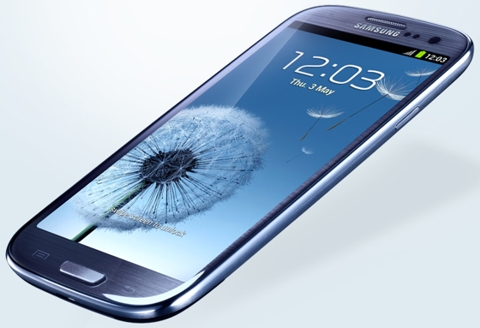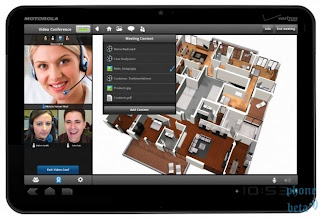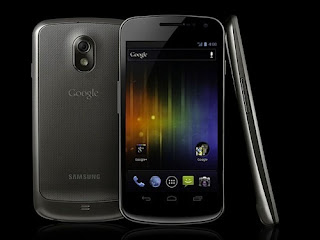ANDROID VERSION TABLE -
Specificatons :
Android 1.0, the first commercial version of the software, was released on September 23, 2008.The first Android device, the HTC Dream, incorporated the following Android 1.0 features:
click the video below to see android 1.1
Specificatons :
On February 9, 2009, the Android 1.1 update was released, initially for the HTC Dream only. Android 1.1 was known as "Petit Four" internally, though this name was not used officially. The update resolved bugs, changed the API and added a number of features:

click the video below to see android 1.5 Cupcake
On April 30, 2009, the Android 1.5 update was released, based on Linux kernel 2.6.27.This was the first release to use a name based on a dessert ("Cupcake"), a theme which would be used for all releases henceforth. The update included several new features and UI amendments:
Specificatons :
The Android 1.6 home screen.
On September 15, 2009, the Android 1.6 SDK – dubbed Donut – was released, based on Linux kernel 2.6.29.Included in the update were numerous new features:
click the video below to see android 2.0/2.1 Eclair
The HTC Droid, running Android 2.0/2.1
Specificatons :
On October 26, 2009, the Android 2.0 SDK – codenamed Eclair – was released, based on Linux kernel 2.6.29. Changes included:
Specificatons :
Google's Nexus One was the first smartphone to receive Android 2.2 Froyo.
On May 20, 2010, the Android 2.2 (Froyo) SDK was released, based on Linux kernel 2.6.32.
On December 6, 2010, the Android 2.3 (Gingerbread) SDK was released, based on Linux kernel 2.6.35. Changes included:
On February 22, 2011, the Android 3.0 (Honeycomb) SDK – the first tablet-only Android update – was released, based on Linux kernel 2.6.36. The first device featuring this version, the Motorola Xoom tablet, was released on February 24, 2011.[47] Changes included:[43]
The SDK for Android 4.0.1 (Ice Cream Sandwich), based on Linux kernel 3.0.1, was publicly released on October 19, 2011. Google's Gabe Cohen stated that Android 4.0 was "theoretically compatible" with any Android 2.3.x device in production at that time. The source code for Android 4.0 became available on November 14, 2011. The update introduced numerous new features, including:

click the video below to see android 4.1.x jelly bean
On June 27, 2012, at the Google I/O conference, Google announced Android 4.1 (Jelly Bean). Based on Linux kernel 3.1.10, Jelly Bean was an incremental update with the primary aim of improving the functionality and performance of the user interface. The performance improvement involved "Project Butter", which uses touch anticipation, triple buffering, extended vsync timing and a fixed frame rate of 60 fps to create a fluid and "buttery"-smooth UI. Android 4.1 Jelly Bean was released to AOSP on July 9, 2012, and an OTA update for the Nexus 7 to Android 4.1.1 was released on July 11, 2012, making it the first device to run Jelly Bean.
 The Android logo, featuring a stylized green robot.
The Android logo, featuring a stylized green robot.
The version history of the Android operating system began with the release of the Android beta in November 2007. The first commercial version, Android 1.0, was released in September 2008. Android is a mobile operating system developed by Google and the Open Handset Alliance, and has seen a number of updates to its base operating system since its original release. These updates typically fix bugs and add new features. Since April 2009, each Android version has been developed under a codename based on a dessert or sweet treat. These versions have been released in alphabetical order: Cupcake, Donut, Éclair, Froyo (frozen yogurt), Gingerbread, Honeycomb, Ice Cream Sandwich, and Jelly Bean. The most recent update to the Android OS was Jelly Bean v4.1, which was announced in June 2012, and was released into the Android Open Source Project on July 9, 2012.
Contents
|
Android beta
The Android beta was released on November 5, 2007,while the software developer's kit (SDK) was released on November 12, 2007.Android 1.0
 |
| downloaded from http://androidapkapp.blogspot.in/ |
click the video below to see android 1.0 Specificatons :
The HTC Dream introduced Android 1.0.
Android 1.0, the first commercial version of the software, was released on September 23, 2008.The first Android device, the HTC Dream, incorporated the following Android 1.0 features:
| Version | Release date | Features |
|---|---|---|
| 1.0 | September 23, 2008 |
|
Android 1.1
click the video below to see android 1.1
Specificatons :
On February 9, 2009, the Android 1.1 update was released, initially for the HTC Dream only. Android 1.1 was known as "Petit Four" internally, though this name was not used officially. The update resolved bugs, changed the API and added a number of features:
| Version | Release date | Features |
|---|---|---|
| 1.1 | February 9, 2009 |
|
Android 1.5 Cupcake

The Android Emulator default home screen (v1.5).
Specificatons :On April 30, 2009, the Android 1.5 update was released, based on Linux kernel 2.6.27.This was the first release to use a name based on a dessert ("Cupcake"), a theme which would be used for all releases henceforth. The update included several new features and UI amendments:
| Version | Release date | Features |
|---|---|---|
| 1.5 | April 30, 2009 |
|
Android 1.6 Donut
click the video below to see android 1.06 Donut
Specificatons :
The Android 1.6 home screen.
On September 15, 2009, the Android 1.6 SDK – dubbed Donut – was released, based on Linux kernel 2.6.29.Included in the update were numerous new features:
| Version | Release date | Features |
|---|---|---|
| 1.6 | September 15, 2009 |
|
Android 2.0/2.1 Eclair
 |
| download from http://androidapkapp.blogspot.in/ |
click the video below to see android 2.0/2.1 Eclair
The HTC Droid, running Android 2.0/2.1
Specificatons :
On October 26, 2009, the Android 2.0 SDK – codenamed Eclair – was released, based on Linux kernel 2.6.29. Changes included:
| Version | Release date | Features |
|---|---|---|
| 2.0 | October 26, 2009 |
|
| 2.0.1 | December 3, 2009[24] |
|
| 2.1 | January 12, 2010[25] |
|
Android 2.2.x Froyo
 |
| downloaded from http://androidapkapp.blogspot.in/ click the video below to see android 2.2.x Froyo |
Specificatons :
Google's Nexus One was the first smartphone to receive Android 2.2 Froyo.
| Version | Release date | Features |
|---|---|---|
| 2.2 | May 20, 2010 |
|
| 2.2.1 | January 18, 2011 |
|
| 2.2.2 | January 22, 2011 |
|
| 2.2.3 | November 21, 2011 |
|
Android 2.3.x Gingerbread
 |
| download from http://androidapkapp.blogspot.in/ click the video below to see android 2.3.x Gingerbread |
Specificatons :
Google's Nexus S
introduced Android 2.3 Gingerbread.
introduced Android 2.3 Gingerbread.
| Version | Release date | Features |
|---|---|---|
| 2.3 | December 6, 2010 |
|
| 2.3.3 | February 9, 2011 |
|
| 2.3.4 | April 28, 2011 |
|
| 2.3.5 | July 25, 2011 |
|
| 2.3.6 | September 2, 2011 |
|
| 2.3.7 | September 21, 2011 |
|
Android 3.x Honeycomb
 |
| rights http://androidapkapp.blogspot.in/ click the video below to see android 3.x Honeycomb |
Specificatons :
The Motorola Xoom tablet introduced Android 3.0 Honeycomb.| Version | Release date | Features |
|---|---|---|
| 3.0 | February 22, 2011 |
|
| 3.1 | May 10, 2011 |
|
| 3.2 | July 15, 2011 |
|
| 3.2.1 | September 20, 2011 |
|
| 3.2.2 | August 30, 2011 |
|
| 3.2.4 | December 2011 |
|
| 3.2.6 | February 2012 |
|
Android 4.0.x Ice Cream Sandwich
 |
| downloaded from: http://androidapkapp.blogspot.in/
click the video below to see android 4.0.x
Ice Cream Sandwich
|
Specificatons :
The Samsung Galaxy Nexus introduced Android 4.0 Ice Cream Sandwich.| Version | Release date | Features |
|---|---|---|
| 4.0.1 | October 19, 2011 |
|
| 4.0.2 | November 28, 2011 |
|
| 4.0.3 | December 16, 2011 |
|
| 4.0.4 | March 29, 2012 |
|
Android 4.1.x Jelly Bean

click the video below to see android 4.1.x jelly bean
Specificatons :
Android 4.1 Jelly Bean on the Asus Nexus 7.| Version | Release date | Features |
|---|---|---|
| 4.1.1 | July 9, 2012 |
|




thanks ... it was really helpfull !
ReplyDeleteyour welcome :)
ReplyDeleteNice information, Get Android Training from Experts
ReplyDelete